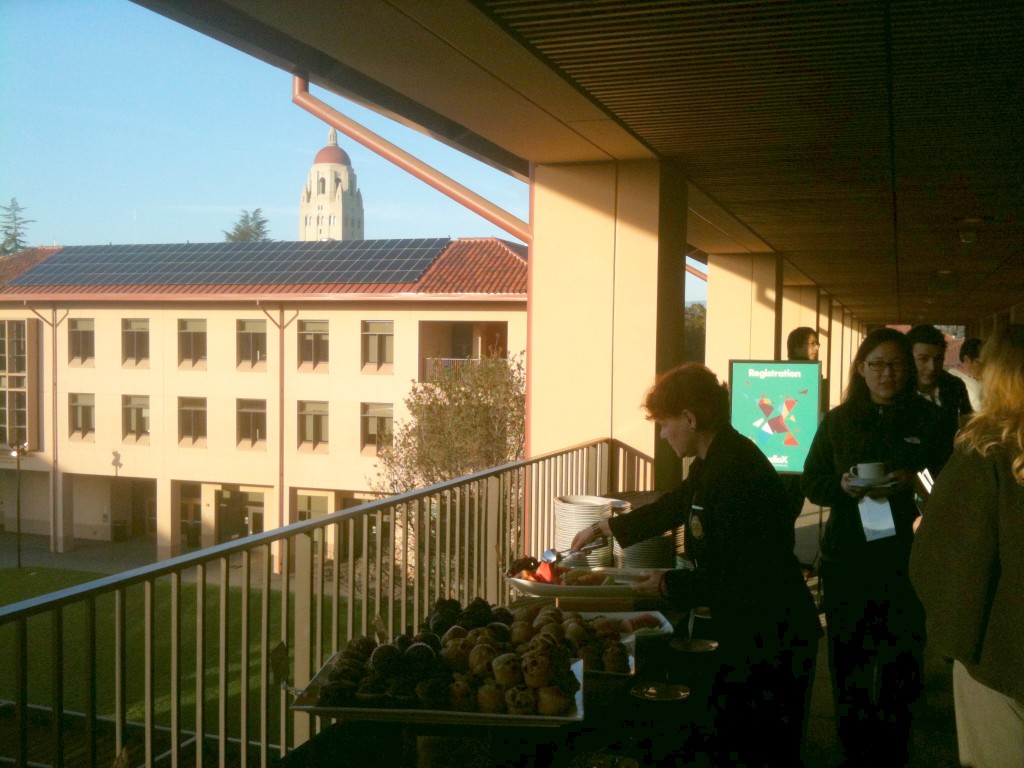 mediaX is the industry-affiliate program for Stanford H-STAR, the Human-Sciences and Technologies Advanced Research Institute,
mediaX is the industry-affiliate program for Stanford H-STAR, the Human-Sciences and Technologies Advanced Research Institute,
This is a curated archive and discussion of the Twitter social-media “backchannel” surrounding mediaX’s 10th anniversary conference, Jan 7-8 in Palo Alto.
1. Introduction: on mediaX, the event and the Twitter “back channel”
2. Conference program
3. Twitter archive
4. Twitter as privately-owned public space: critical use/making
5. Note on methodology, completeness, and archival stability
6. Final Note: Beyond Twitter, Newswires of the Future
1. Introduction: on mediaX, the event and the Twitter “back channel”
 mediaX’s mission, as stated in the conference program, is to
mediaX’s mission, as stated in the conference program, is to
connect businesses with Stanford University’s world-renowned faculty to study new ways for people and technology to intersect. We help our members explore how the thoughtful use of technology can impact a range of fields, from entertainment to learning to commerce.
Conference participants and organizers — both on-site and remote/public — used the social-media service Twitter to make announcements, post notes and photographs, make comments, ask questions, and annotate presentations with links and citations, etc.
This practice, often called an event “backchannel“, is a public, mainly self-organized and ad-hoc practice, achieved simply by participants adding a consistent “hashtag” term to posts so they can be discovered and gathered easily — in this case, “#mediax2013“.
Twitter backchannels have become common at conferences, particularly in technology, media, and academia. They can achieve various purposes such as coordinating in-person meetings (“where’s lunch?“), allowing discussion and annotation of presentations in realtime, and involving off-site and at-large participants (sometimes called “event amplification”, although I would prefer “event augmentation”).
Among social media, Twitter in particular has become a kind of global public laboratory for such emerging practices in network communication & collaboration, giving it a fair bit in common with mediaX mission and projects. In fact, the activity on the #mediax2013 channel in some ways provided a live demonstration of specific research topics presented on during the day:
- realtime collaboration and crowdsourcing to tackle complex tasks and extend individual cognition (Michael Bernstein, Ramesh Johari, Byron Reeves)
- multitasking and the “devaluing of immersion” (Clifford Nass)
(yes, all the people tweeting notes on Nass’s presentation were illustrating his point, probably some aware of the irony) - distributed, diverse, non-hierarchal, possibly ad-hoc work groups (Renate Fruchter, Pamela Hinds, B. Reeves): for example, backchannel participants asked and answered questions, and performed real-time shared note-taking and discovery/linking of materials mentioned by presenters. The Twitter channel extended a type of real-time participation to a far larger group of people than were physically at the event.
Play is not the opposite of work, it is the engine. –@Stanford Professor Byron Reeves #mediax2013
The title of this post, “Play is Not The Opposite of Work” is a taken from the tweet message above, which was a quote from the presentation “Solving Business Problems Using the Engagement of Multiplayer Games” by Byron Reeves, Professor of Communication at Stanford. The quote was first tweeted at 2:13pm by John Alderman (@mrhungry), and seconds later by Paul Franz (@Paul_Franz).
However, the 2:20pm tweet by @StanfordBiz, a much more widely-followed account (around 59,000 followers) managed by Karen Lee, was quickly “retweeted” by a number of other accounts, and began to spread steadily through the Twitter network.
By the time I did the tweet collection on Weds at 10am, the @StanfordBiz tweet had been retweeted 68 times, far more than any other tweet, and it continues to be steadily repeated since then.
The second-most-frequently tweet was by me, containing a quote from Larry Lessig’s keynote address, along with an attached photograph of his accompanying slide:
the key U.S. political divide is not Left vs. Right, but Insider vs. Outsider @lessig #mediax2013 pic.twitter.com/TMJvAcwQ
While I have not performed a “reach” analysis of how many Twitter users potentially saw these tweets, I estimate it was in the low to mid 100,000s for the “Play is not the opposite of work” and 5-700,000 for the Lessig tweet. The latter, while retweeted fewer times, was retweeted by @CreativeCommons, an account with nearly 500,000 followers.
[Potential reach is a measurement of many Twitter accounts “follow” any account which posted or reposted the item. However, since most users “stream-dip” rather than read every post, the actual number of users who actually see a post may be 10-40% of the potential reach, depending on factors such as time of day, the post volume on the account transmitting the post].
2. Conference program
MONDAY, JANUARY 7: MEDIAX 2013 MEMBER APPRECIATION
Location: Mayfield, Restaurant, Palo Alto, CA
6:00pm Cocktails and Special Exhibits
Exhibit: “Graphical Representation of Electric Vehicle Interface Data”
Martin Steinert, Mechanical Engineering
6:30pm Welcome
“Thanks, and Recognition of Founders, Former Executive Directors and Stanford Researchers”
Martha Russell, mediaX at Stanford University
“Free Online Courses – An Instructor’s Perspective”
Keith Devlin, H-STAR Institute
6:50pm Dinner
7:45pm mediaX Member Appreciation
8:00pm Keynote: “Partnering with Stanford for BOLD Innovation”
Shoei Yamana, Konica Minolta Business Technologies
8:30pm Dessert, Networking, and Adjourn
TUESDAY, JANUARY 8
Location: Knight Management Center, Oberndorf and CEMEX auditorium
8:15am Registration and Coffee
8:45am Welcome
Martha Russell, mediaX at Stanford University
8:50am “Collaborations for Discovery”
Claude Steele, Stanford Graduate School of Education
9:00am Research Briefings
- “Dancing with Ambiguity: Making Sense of the Media in Design Thinking Research”
Larry Leifer, Mechanical Engineering Design, Center for Design Research - “Draft In, Galley Out (DIGO): Finally, A Completely Automatic Scholarly Article Parsing and Markup Solution”
John Willinsky, Stanford Graduate School of Education
(represented by Juan Pablo Alperin, Stanford, & Alex Garnett, Simon Fraser University) - “The Engineer as Economist: The Design of Online Market Platforms”
Ramesh Johari, Management Science and Engineering - “Global Teamwork 3.0”
Renate Fruchter, Civil & Environmental Engineering, Project Based Learning Lab - “Brain Patterns and the Mind
Anthony Wagner, Psychology and Neuroscience
9:45am Break, Exhibits, & Networking
10:10am Introduction
Martha Russell, mediaX at Stanford University
10:15am “Emerging Opportunities in K-12 Learning Analytics for Personalized Learning at Scale”
Roy Pea, Stanford Graduate School of Edudcation, Education & Learning Sciences
10:45am “Creativity and (National) Culture: Understanding Team Creativity and What Fosters It”
Pamela Hinds, Management Science and Engineering
11:15am “Identity, Accuracy, and Apologies – Getting Social Roles Right in Digital Interaction”
Clifford Nass, Communication
11:45am LUNCH
SYSTEMS HEALTH CARE
Hiroshi Nakajima, Omron
1:15pm “Filling in the ‘H’ in CHI”
Terry Winograd, Computer Science
1:45pm “Solving Business Problems Using the Engagement of Multiplayer Games”
Byron Reeves, Communication
2:15pm Spinning Out and Scaling Up
Cameron Teitlebaum, StartX
Panel:
Reid Senescu, CloudLeaps
Relly Brandman, Coursera
Jay de Groot, PersuasionAPI, Science Rockstars
Emilio Lopez, Premonit
2:45pm 3:15pm Break, Exhibits, & Networking
3:25pm “Insight and Innovation from Calm”
Neema Moraveji, Calming Technology Lab
3:25pm “From Technology Development Towards Social Innovation”
Boris De Ruyter, Philips Research
Comments by mediaX Industry Visiting Scholars:
Tracey Wilen-Daugenti, Apollo Research Institute
Haisong Gu, Konica Minolta
3:55pm Crowd-Powered Systems
Michael Bernstein, Computer Science
4:25pm “Digital Footprints – Mine, Yours, and Ours”
Jeremy Bailenson, Communication
4:55pm “Looking Ahead”
Martha Russell, mediaX at Stanford University
5:00pm Reception, Networking
5:30pm Keynote: “Forbidden Problems”
(open to public)
Larry Lessig, Harvard Law School
7:00pm Adjourn
3. Twitter archive
Tweets from 146 unique accounts were found by the TAGS collection tool. It appears that a majority of these tweeters were not in-person conference attendees, but retweeting or commenting on event information.
Top 5 twitter posters, by tweet volume:
- @msquihuis (Margarita Quihuis), Stanford Persuasive Technology Lab (61 tweets)
- @MediaXStanford (39 tweets)
- @tmccormick (Tim McCormick), mediaX / independent (32 tweets)
- @MrMeritology (Russell Thomas), George Mason Univ. PhD student & mediaX consultant (29 tweets)
- @Paul_Franz (Paul Franz), Stanford Learning Sciences and Technology Design PhD student (28 tweets)
.@MediaXStanford conference Tues, public keynote @lessig; program bit.ly/Zzve2z full PDF stanford.io/119QhZY #mediax2013 #mx2013
.@lessig: “Forbidden Problems”: can we code the Internet to confront us with disagreeing ideas? bit.ly/UT3HFz #mediax2013 @NiemanLab
The challenge is [to] build an essential feature of politics — confronting ideas one doesn’t agree with — into the code” @lessig #mediax2013
mediaX2013 conference at Stanford. Welcoming by: @MarthaRussell 8:45 a.m. #mediax2013
So excited for the @MediaXStanford talks today! Hoping @pertslab can get involved. #mediax2013
Time to start..#lookingforwardonit RT @MediaXStanford: mediaX2013 conference at Stanford. Welcoming by: @MarthaRussell 8:45 a.m. #mediax2013
Dean Claude Steele, Graduate School of Education #mediax2013 conference. “Today will be an opportunity to hear from many thought leaders.”
Mind-expanding day celebrating #mediax2013 10th anniversary @Stanford
.@MediaXStanford conference: we have muffins #mediax2013 pic.twitter.com/4dstAIec
Attending #mediax2013 today at Stanford. Looking forward to hearing about some #tech innovations, and how we can apply them to #education
“The Media Equation” by @byronreeves & @CliffNass, 2003 amzn.to/XhDU9I inspired @msbernst as student, @rdp_life notes #mediax2013
“the search friction has been replaced by a cognitive friction,” marketplaces can have too much info. @rameshjohari #mediax2013
“The Engineer as Economist” by @rameshjohari refs A Roth 2002 paper “The Economist as Engineer” PDF kuznets.harvard.edu/~aroth/papers/… #mediax2013
a visual system to represent/study flow of concept-generation in design teams. PhD thesis Neeraj Sonalkar bit.ly/11cnvrG #mediax2013
#mediax2013 visual “interaction-dynamics language” to code design conception process (Sonalkar, 2012 bit.ly/11cnvrG) public anywhere?
“Draft In, Galley Out (DIGO): Automatic Scholarly Article Parsing & Markup” @axfelix & @juancommander pkp.sfu.ca #mediax2013
Follow today’s mediaX Conference at #mediax2013!
Fruchter: “We are compelled to act when we are faced with our own data.” Wondering about implications for personalized learning. #mediax2013
Roy Pea – US ranks #31st in mathematics internationally, 23 in science, 17th in science #mediax2013
US a drop out factory 7 out of 10 do not graduate from college #mediax2013
k-12 in school time provides 1 million min for learning #mediax2013
I propose we rename #mediax2013 to ‘disruptx’… We are investigating disruption of everything from work to media to education to psychology
MT @stanfordeng: Follow today’s mediaX Conference at Stanford at #mediax2013!
LEAD commission established to determine how technology can help transform education in America #mediax2013 ow.ly/gDSAH
@RoyPea applying machine learning / analytics to create personalized learning and revolutionize education @MediaXStanford #mediax2013
“Learning analytics: collecting learners’ traces & using them to improve learning” @ErikDuval erikduval.wordpress.com/about/ via @rdp_life #mediax2013
55 million US K-12 kids – but we have very little data about them; digital learning will create an explosion of big data #mediax2013
Emerging demand for education data scientists to deal with coming explosion of education big data #getyourstatisticson #mediax2013
Emerging uses of sensors for emotion detection to detect frustration, engagement & other learning-relevant states in ed #mediax2013
Ed data scientist challenges – modeling challenge, user behavior & user experience, user profiling, domain modeling #mediax2013
Roy Pea at #mediax2013 : fine grain matching of learners and learning resources. Fascinating potential in personalized education.
new teacher & school leader roles in data-driven decision making – need to increase their comfort with data #mediax2013
No degree programs in education data science, educational data mining #mediax2013
Wow. Advances in educational research being implemented in the field faces a human resource bottleneck. #mediax2013
Pamela Hinds on creativity and national culture: understanding team creativity & what fosters it #mediax2013
creativity practices develop out of cultural concepts that locally exist; everything happens for a reason #mediax2013
Excited to be working with @rdp_life on Learning Analytics and bringing data science to education! #MediaX2013
US & Europe style creativity out of harmony with work style and flows in Korea #mediax2013
‘the problem with design centers in the US and Europe is they are too creative’ : design director, Korea via Pam hinds #mediax2013
Western view creativity focuses on novelty & originality; eastern view focuses on subtle improvements, societal contribution #mediax2013
iterative prototyping improves creative performance by helping people learn quickly & try more ideas #mediax2013
Eastern creativity : subtle, procedural. Western : disruptive, fractal. Iterative prototyping works @Stanford #mediax2013
iteration with feedback: Westerns do better with iteration; Asian students do worse with iteration #mediax2013
iteration without feedback: western students did worse; Asian students did better on creativity #mediax2013
iteration practices w/feedback seem to be more aligned with a western way of working, therefore more engaged #mediax2013
stereotype threat seems to operate with Asian students; amplified when put in creative processes that are more western #mediax2013
tolerance for struggle valued more than the right answer in other countries #mediax2013
Shades of Carol Dweck fixed vs growth mindsets in how we deal w/struggle; how can we normalize struggle as part of learning #mediax2013
at #mediax2013 today: learning & self-efficacy theories meet data analytics. Silicon Valley is a machine for learning
Should robots be able to choose their own personalities? #mediax2013
4 most important things to know about the psychology of media by Cliff Nass #mediax2013
media use growing in all age groups; Teens, Tweens; avg 9 year old has a cell phone, 3 years ago it was 13 year olds #mediax2013
One of the saddest moments is when legos moved online; its great virtue was its physicality and frustration #mediax2013
Babies affected by media; babies attracted to new faces and voices and media is abundant in both #mediax2013
In society, immersion is becoming devalued; movie theaters now allocating twitter sections #mediax2013
Why do we keep consuming and producing more media? Is there a limit? Good question. #mediax2013
Parallel play in adults: a bunch of college kids sitting in the lounge together each on their own laptop or tablet-Cliff Nass #mediax2013
Backstage, CEMEX Auditorium, #mediax2013 conference. @CliffNass pic.twitter.com/9AEoxfR5
#mediax2013 “Creativity and (National) Culture: Understanding Team Creativity and What Fosters It” cf. Dahlin 2006 PDF stanford.io/WuJPFm
.@cjtman of @StartX on “Spinning Out & Scaling Up” RT @StanfordBiz: Follow #mediax2013 for insights from today’s @MediaXStanford conference
Cliff Nass: Multitasking is terrible for your brain. Task switching engages the brain with irrelevant information. #MediaX2013
Cliff Nass tears Barney the Dinosaur apart – Unpacking the I love you song #mediax2013
How Barney the Dinosaur changed American society – “we are friends as friends should be” laid the groundwork for Facebook #mediax2013
Clifford Nass on the Dramatic devaluing of face to face communication thanks to Barney! #mediax2013 instagr.am/p/UPDOp2AeTF/
The Barney song moment : societal pivot to devaluation of face-to-face communication. Cliff Nass #mediax2013
Clifford Nass asks why media use continues to grow – partial media displacement – we consume in parallel with other activities #mediax2013
Attenuation of trust has changed; fame as #1 value in pre-adolescents – used to be compassion & community #mediax2013
Cliff Nass: Fame has become the #1 value in pre-adolescents. Not compassion, not happiness, not friendship. Fame. #MediaX2013
Social media algorithms create definition of self; used to be we learned about ourselves by how we interacted with others #mediax2013
Nass on the Implications of media consumption, social media use and cognitive loss –> Fame is the #1 value in pre-adolescents. #mediax2013
Car important locus of media growth; increasing automation in driving means more attention to media; #mediax2013
Twitter doesn’t know what Cliff Nass is talking about. People care more about fame than relationships? No way… ;) #MediaX2013
multitasking effects: cognitive/social deficits, selling & measuring attention more difficult, immersion devalued @CliffNass #mediax2013
Implications – car makers considering letting driver use iphones & SIri operate the car; abdicating brand to Apple #mediax2013
Sadness vanishing from social media because it’s not engaging; young people do not get to practice negative feelings #mediax2013
Map for Stanford: schmap.it/lrtlt0 – RT @mchris4duke MT @stanfordeng: Follow today’s mediaX Conference at Stanford at #mediax2013!
“Facebook is the (un)happiest place on earth”: people present as happy, but made unhappier by using it @CliffNass #mediax2013
Nass on Facebook: Faces (all happy) Posts (only happy are liked) Likes (algorithm pushes happy) –> No place for -ve emotions. #mediax2013
Lack of practice of negative feelings doesn’t make us happy, we don’t learn how to manage emotions, read others emotions #mediax2013
is social media making us autistic? #mediax2013
Send Cliff Ness more often on a sabbatical .. very energised talk .. tnx. #mediax2013
Young people …but not only …have less skills in emotional regulation, reading, and working with other’s emotions #mediax2013 Cliff Nass
Compare emotional involvement in earlier design group videos w/ social media devaluation of face 2 face interaction #mediax2013
Terry Winograd speaking on the human element of computer human interface #mediax2013
Human-Computer Interaction or Computer-Human Interaction? Terry Winograd prefers the former. Human first. #MediaX2013
History of human computer interface – from turning the crank to punch cards, paper tape #mediax2013
Terry Winograd: The original GUI from Xerox Park is not all that different from what we use today. #MediaX2013
Fundamental graphical user interface has remained the same for last 30 years; mobile is the exception #mediax2013
8 Jan 13
History of human computer interface – from turning the crank to punch cards, paper tape #mediax2013
@msquihuis okay I’m not so old. I started with punch cards. Turning the crank on a computer? did Ben Franklin do that? :-) #mediax2013
@msquihuis okay I’m not so old. I started with punch cards. Turning the crank on a computer? did Ben Franklin do that? :-) #mediax2013
@drmghernandez Babbage machine! It looks like a crazy steampunk mechanical computer #mediax2013 ow.ly/gEbn1
what are the impacts of physical embodiment in the virtual world? See Jeremy Bailenson’s work #mediax2013
Unless you believe in the Matrix, we’ll always be looking at how computing relates to our bodies #mediax2013
2001’s Hal malevolent computer passed the Turing Test; a disembodied interface #mediax2013
A human is a physical body, a language understander… #mediax2013
a human is … an information processor #mediax2013
a human is .. a worker in an organization; how can a computer augment this collective work? #mediax2013
Terry Winograd introduces Bubblehead #mediaX2013 campl.us/nBaW
A human is… a source of commitments; how can computers support creative work? #mediax2013
Stanford Digital Libraries Project – created an ecology of information #mediax2013
“How can computers support creative work?” Terry Winograd. #mediax2013
a human is an information seeker (informavore) #mediax2013
a human is a social being; a being in a social space – computers support that social space (our current phase) #mediax2013
“You promised me a Mars colony and I got Facebook” ~ Buzz Aldrin #mediax2013
Humans may be “social beings,” but we should not forget the value of sometimes being anti-social beings, as well. #MediaX2013
Not just conversation and community, but introversion and introspection can be supported by technology. #MediaX2013
“Who I am” has been associated with a physical body and f2f interactions; now that has been detached #mediax2013
Social identity – fame & fortune, connecting with family & friends through tech mediation #mediax2013
Terry Winograd on CHI: Current computing phase=a human is a social being. #mediax2013
My friend Byron reeves up next, after terry winograd at #mediax2013 movable intellectual feast @Stanford
Getting ready to go on stage.. #mediax2013 @PersuasionApi flic.kr/p/dK16HQ
Byron Reeves going to talk about multiplayer games at the #MediaX2013 conference.
‘I never quite know…’ ; common ‘work sucks’ complaint from modern info workers Byron Reeves #mediax2013 ergo #gamification
Play is not the opposite of work. #mediax2013
Byron Reeves continued: 5) Gamers already do work. 6) Play is NOT the opposite of work. 7) Engagement is good business. #MediaX2013
There’s still a very strong anti-gaming sentiment in culture at large. #MediaX2013
‘gamers already do (sophisticated) work’ Byron Reeves #mediax2013 #gamification
When we talk about games in business and research, why is it always multiplayer games? #MediaX2013
.@byronreeves explains why games are BIG! #mediax2013 instagr.am/p/UPTu8UgeSu/
Byron Reeves: Kids who play games are often healthier and do better in school. #MediaX2013
Byron Reeves ingredients for succesful games: 1) Self-representation. 2) Narrative. 3) Feedback. 4) Transparency. 5) Teams… #MediaX2013
More… 6) Economics. 7) Ranks and levels. 8) Rules. 9) Communication. 10) Time pressure. #MediaX2013
Ingredients for successful games #mediax2013 pic.twitter.com/GhtZDs5k
.@byronreeves – games need: self rep, narrative, fdbk, transparency, teams, economies, ranks & lvls, rules, comms, time pressure #mediax2013
One thing missing from Byron’s list is imagination. Like great books, great games don’t give you everything. They let you dream. #MediaX2013
Play is not the opposite of work, it is the engine. –@Stanford Professor Byron Reeves #mediax2013
Note the huge growth in 2D puzzle games and platformers lately (just check Steam to see what I’m talking about). Imagination! #MediaX2013
Crusader Kings 2, Football Manager, and Distant Worlds are all great examples of games that support single player imagination. #MediaX2013
One thing missing from Byron’s list is imagination. Like great books, great games don’t give you everything. They let you dream. #MediaX2013
@Paul_Franz good point! Applies to open-ended games like Populous and Sim City. Can imagination/creativity be gamified? #mediax2013
Engagement at work #mediax2013 pic.twitter.com/lVAs1XKW
I always wonder: is gamification categorically different than traditional ways of building incentive structures? #MediaX2013
.@byronreeves “People are thinking about gamingifying everything!” #mediax2013 instagr.am/p/UPU1g5AeUD/
Engagement isn’t something you DO, it’s something you GET @byronreeves #mediax2013
Gamification can be great, but can also feel really tacky. Remember that games are immersive and fun. Gamifying often isn’t. #MediaX2013
Gamification course avail @coursera per Byron Reeves at #mediaX2013
Cisco ‘closer wars’ sales game visual .. Ranks, badges, training. @byronreeves #mediax2013 #gamification
Language development internal crowd source game at Microsoft #gamification #mediax2013
.@byronreeves on Target ‘games’ tracking employees vs. standard times. Creepy? Makes me think of Manna: bit.ly/c1r7l1 #mediax2013
If anyone wants a good book on games and narrative, check out “Extra Lives: Why Video Games Matter,” by Tom Bissell. #MediaX2013
Certain games may be more arousing with a story, but some are better off without (see Europa Universalis series). #MediaX2013
Doing the same activity, those with a story behind the activity show greater arousal. Narratives drive engagement. #mediax2013
Martha Russel just gave a shoutout to my recent interlocutor @tonyklai. StartX does fascinating work here at Stanford. #MediaX2013
.startx Accelerating the development of founders through experiential education. @cjtman #mediax2013 instagr.am/p/UPXIxkgeWW/
@coursera‘s Relly Brandman on the StartX panel here at #MediaX2013. Relly was fantastic to work with during the MathThink course.
Panel on @StartX: student run network for Stanford’s best startup founders thru experimental ed and collective intelligence #mediax2013
.@cjtman founder of startx moderates a panel of Stanford entrepreneurs #mediax2013 instagr.am/p/UPX5mCgeW3/
Beginning to feel information overload, which is exactly what I signed up for. #mediax2013 instagr.am/p/UPcyuGjk9x/
Sneaking a peek @lessig‘s deck as he preps 4 his big keynote @Stanford 2nite (his 1st talk here since he left 4 Harvard) #mediax2013
Crowd sourcing may be dependable enough now to build the power into software. #mediax2013
But crowd sourcing faces challenges that Michael Bernstein is trying to design software solutions to overcome #mediax2013
“Soylent: a Word Processor with a Crowd Inside”: Word plugin uses crowdsourcing to proofread bit.ly/11dtRXO @msbernst #mediax2013
30% of results in open tasks come back unsatisfactory #crowdsourcing #mediax2013
how do we take something in an open ended fashion and refine it #crowdsourcing #mediax2013
The optimal personality type for a collaborative working group? An empathetic extrovert – Larry Leifer #mediaX2013
People who gesticulate a lot in small group problem solving tend to be more successful – Larry Leifer #mediax2013 (score for me!)
“EmailValet: Managing Email Overload through Private, Accountable Crowdsourcing” bit.ly/UUSW5q (@msbernst et al 2012) #mediax2013
the user loses focus after 10 seconds #crowdsourcing #mediax2013
adrenaline realtime crowd-powered camera by @msbernst #crowdsourcing #mediax2013
how do you recruit crowds quickly? one method is a retainer model 69-84% in 3 minutes #crowdsourcing #mediax2013
“Crowds in Two Seconds: Realtime Crowd-Powered Interfaces.” PDF stanford.io/11dvLb5 (@msbernst, @karger et al 2011) #mediax2013
how do we overcome slow work times; synchronous crowds #crowdsourcing #mediax2013
integrate social and crowd intelligence as core parts of interaction, software, and computation #crowdsourcing #mediax2013 @msbernst
Transparency is not always preferable 2 opacity in engineered marketplaces (how do we find the optimal balance?) – Ramesh Jahari #mediax2013
“digital footprints” in ch.10 of @infinitereality by Blascovich & Bailenson amzn.to/XiC8F9 ch.1 PDF bit.ly/WvUTlD #mediax2013
realtime analysis of facial expressions, w/machine learning, predicts driving accidents 28-37% above chance @infinitereality #mediax2013
“Honest Signals”: unconscious social signaling reveals your attitudes. @alex_pentland amzn.to/ZEuLfI noted @infinitereal #mediax2013
@LarryLessig giving many cases of public goods created as side effect of private effort. Also “hybrid economy” (Remix) #mediax2013
“Does participation culture build businesses on our collective backs?” (digital sharecropping) (ignored by reviewers of book) #mediax2013
New normal: “hybrid economy” platforms undercut developers/modders all the time @LarryLessig #mediax2013
‘new normal = islands controlling right to innovate on the internet’ . we litigated msft vs. netscape on this @LarryLessig #mediax2013
Q: are public goods ONLY going to be produced as byproduct of private efforts? @LarryLessig #mediax2013
#mediax2013 Larry Lessig of Creative Commons fame and Harvard Biz school calling on social platforms to stop restricting development.
Heretics wear the coolest dresses, generally @LarryLessig #mediax2013
‘code based constraints that get us to do what we might need to do’ @LarryLessig #mediax2013 present of public goods?
“money election” = winning the votes of 0.05% of people who fund election campaigns @LarryLessig #mediax2013
0.00042% of US population gives 60% of SuperPac money in last election @LarryLessig #mediax2013
Wow: 132 Americans provided over 60% of Superpac money #mediaX2013
30-70% of congressperson’s time spent raising money, primarily with 0.05% of population (“funders”) @LarryLessig #mediax2013
‘this is legal corruption’ @LarryLessig RT @lucyfj: Just 132 Americans gave 60% of the superpac money in the 2012 election. #mediax2013
a higher % of Americans had trust in the British Crown in 1776 than have trust in Congress today. @lessig “Forbidden Problems” #mediax2013
Wow! @lessig is great. Erosion of trust / confidence leads to erosion of participation. “Why waste my time?” #mediax2013
‘trivially easy to buy ‘no’ from our government’ @LarryLessig #mediax2013
.@lessig: the controlling funders, 0.05% of U.S, want, primarily, *nothing*, just to block change to current dysfunction #mediax2013
‘opt-in,amplified,small $$ citizen-funded campaigns only way to eliminate corruption’ @LarryLessig #mediax2013
#mediax2013 @lessig: “progress is to make equal the influence that contributions have on political campaigns: citizen contributions.”
“Capitol hill has become the farm league for K street.” – Larry Lessig #mediax2013
According to Public Citizen, in recent years 50% of Senators have become lobbyists after leaving office #mediaX2013
Inside vs. Outside is more impt/relevant than Right vs. Left. “DC is from Mars. We are from Earth” @LarryLessig #mediax2013
Force of change: “open source political energy”; eg Moveon.org, (early) Tea Party (pre-Corp takeover) @LarryLessig #mediax2013
the key U.S. political divide is not Left vs. Right, but Insider vs. Outsider @lessig #mediax2013 pic.twitter.com/TMJvAcwQ
problem with exo-political movements: they are increasingly polarized, depending on demonizing the Enemy. @LarryLessig #mediax2013
To solve Insider/Outsider + polarization: “I am willing to make my friends (fellow believers) uncomfortable” @LarryLessig #mediax2013
i.e. “the broccoli of information” @LarryLessig #mediax2013
“need to find a way to speak (about political reform) in a way so that others (on the other pole) can hear” @LarryLessig #mediax2013
‘the republic crisis’ ; letting the 132 donors dictate our democracy to us @lessig #mediax2013 #rootstrikers
To join with @LarryLessig : rootstrikers.org #rootstrikers #mediax2013
“architecture-based coercion” might help people “speak so others can hear,” find common cause for political reform @lessig #mediax2013
Preso at rootstrikers.nationbuilder.com/remix_sneak_pe… — avail. for remix under CC @LarryLessig #mediax2013
#rootstrikers should seek “generative reforms” and “reform platforms” (from @zittrain) @LarryLessig #mediax2013
@moraveji on using wearable tech to maintain calm and be our best self. Very cool. Read here ow.ly/1QWDqx #medtech #mediax2013
Is political funding reform impossible? @LarryLessig sez: “I don’t have the right to pass down a broken America” #mediax2013
“You [Silicon Valley] need to look up from the machine, take on the task of fixing this [republic].” @lessig #mediax2013
.@lessig ends w/poignant note on terminal cancer of corruption. “The odds are irrelevant, you do what you can” #loveofcountry #mediax2013
The public keynote for #mediax2013 by @LarryLessig was one of the clearest + most compelling talks I’ve heard in a long time. Great job, all
thanks for stellar #mediax2013 @MediaXStanford: @MarthaRussell @rdp_life @byronreeves @profkeithdevlin @monsusana, Addy Dawes, et al
#MediaX2013 summit @Stanford was incredible. So much talent working to reinvent the way we connect to ourselves and each other.
To all #mediax2013 @Stanford attendees and speakers: Thank you for making this year’s conference such a success! pic.twitter.com/0pxhKaGA
#mediax2013 -Smart tweets coming from this conference – congrats attendees – much appreciated / kudos
4. Twitter as privately-owned public space: critical use/making
(a critical note)
Twitter archives are typically presented with the implicit suggestion that they’re complete, or at least representative, apart from any deliberate editing by the presenter (as was done in this case). This is perhaps part of a general tendency to assume that algorithmic tools — e.g. archivers, search engines — operate consistently and do what they say they do, or perhaps just due to social-media archiving being relatively new and poorly understood.
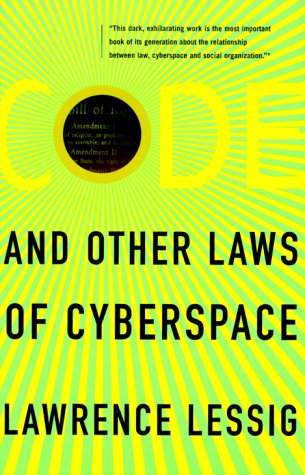 However, the tools used to monitor and archive Twitter activity, for example, are often opaque, and may yield results that are incomplete, inconsistent, or difficult to verify. This is of growing importance because social media archives/records are becoming used as “official” records of events, even public/government events, to evaluate the impact of scholarly communications via “altmetrics,” for types of online group deliberation, etc.
However, the tools used to monitor and archive Twitter activity, for example, are often opaque, and may yield results that are incomplete, inconsistent, or difficult to verify. This is of growing importance because social media archives/records are becoming used as “official” records of events, even public/government events, to evaluate the impact of scholarly communications via “altmetrics,” for types of online group deliberation, etc.
Possibly the most influential articulation of such concerns is the landmark 1st book by mediax2013 keynote speaker Lawrence Lessig, Code and Other Laws of Cyberspace (1999). Lessig expressed the book’s key point as “Code is law”: meaning, decisions made in implementing electronic tools may regulate conduct as or even more powerfully than legal “code,” while possibly being harder to examine or affect.
From a user’s perspective, the view of one’s social network you get from systems such as Twitter or Facebook is often highly mediated, due to the systems’ use of features variously described as filtering, reach management, or engagement management.
“Reach” refers to how many views a content posting receives, either in total impressions or as a percentage of the poster’s “followers” (i.e. the people/pages you “Friend”, Like, or Follow). Marketers and analysts continually try to assess these reach patterns/percentages, and the algorithms, design, & user behaviors driving them. The social networks tend to give only generalized guidance on these points, but the reach for Facebook and Twitter they are believed to range from from 5% to 30%.
The networks have many plausible motivations to actively tune “reach” and filtering, and to keep the details non-public:
- to help sell “paid reach,” e.g. Twitter ads & Facebook promoted posts
- to prioritize/attenuate information for users: so for example if you’ve been away for many days, you may want to see only important posts, not all of them.
- possibly, to manage user experience towards certain desired behavior states. For example, Facebook shapes user behavior towards expressing “Like” and “friend”, not “thumbs-down” or “poorly reasoned.” As discussed in Clifford Nass’ presentation at #mediax2013, there is evidence that Facebook may use content evaluation tools such as sentiment analysis to foreground content considered more “positive.”
In a more sinister vein, Facebook might hypothetically design to encourage patterns of variable / intermittent reinforcement, because they tend to have an engaging or addicting effect. Facebook’s business is primarily to sell advertising, which depends heavily upon increasing your time spent on site.
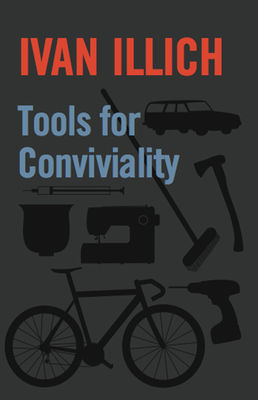 So, while services such as Twitter may be radically open in some respects — letting any member of the public participate in the mediaX conference, for example, or what Twitter CEO calls the new global “agora” — they also tend to be opaque, even indeterminate in behavior, from a users standpoint.
So, while services such as Twitter may be radically open in some respects — letting any member of the public participate in the mediaX conference, for example, or what Twitter CEO calls the new global “agora” — they also tend to be opaque, even indeterminate in behavior, from a users standpoint.
The broader point is that as our lives and work are increasingly mediated by electronic “privately owned public space” — such as Twitter — we can’t adequately understand ourselves, each other, or society if we don’t understand these tools. Opaque and unaccountable tools, platforms, and environments reduce our agency, taking us in the opposite direction from the “Tools for conviviality” which Ivan Illich’s 1973 book argued we must find or build to have humane lives and societies. (Illich’s book was an important inspiration to the Homebrew Computers Club which counted many personal-computer pioneers among its members).
5. Note on methodology, completeness, and archival stability
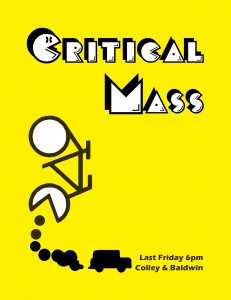 A) Critical Making
A) Critical Making
In producing this report on the #mediax2013 backchannel, I decided to examine the Twitter data considering the critical issues above, both as an effort to produce a considered report, and as an exercise in what you might call “critical making.” Without getting especially rigorous, as that would require a larger and separate project, I took the opportunity to explore some ways that social-media measurement/archiving might be done skeptically and responsibly.
My main source was the Twitter posts which were tagged with the conference hashtag “#mediax2013“, plus the conference program and notes from my event attendance on January 8.
 B) TAGS tool
B) TAGS tool
The primary archiving tool used was TAGS (Twitter Archiving Google Spreadsheet) v3.2, created by Martin Hawksey, Learning Technology Advisor at Jisc, CETIS, UK. (Thanks Martin for this great tool). TAGS gathers a more complete record per tweet than most tools, including URLS to the individual “status”/post pages on Twitter, and metadata on activity surrounding each tweet.
Like most Twitter archiving tools, TAGS uses the Twitter Search API, which is not assured to return a complete record of tweets matching a query. In a widely-unknown but not-hidden guidance, Twitter’s documentation notes,
Twitter’s search is optimized to serve relevant tweets to end-users….The Search API (which also powers Twitter’s search widget) is an interface to this search engine. Our search service is not meant to be an exhaustive archive of public tweets and not all tweets are indexed or returned.
(see Twitter developer FAQs, section “Why are the Tweets I’m looking for not in Twitter Search”). Twitter recommends using the alternate Streaming API instead for better completeness, but they do not assert it is actually complete.
C) Comparison of archiving tool results:
Three tools were compared, collecting all tweets with the conference hashtag. The timespan considered was Mon 07 Jan 5pm to Weds 09 Jan 10:00am (PST).
- TAGS
The full archive can be downloaded here: mediax2013-twitter-archive.xls
=>494 tweets - TweetDeck Twitter client, left running thoughout the event.
509 tweets in a timespan for which TAGS collected 481 –
=>509 tweets: 28, or 7% more than TAGS - Eventifier Web-based archiving service
I excluded those tweets outside timespan or without hashtag.
Eventifier archive for #mediax2013.
=> 581 tweets = 87, or ~16% more than TAGS
Due to time, I chose to only spot-check rather than fully examine the different results from TAGS, TweetDeck, and Eventifier.
TweetDeck uses the realtime Twitter Streaming API, and Eventifier may use either the Streaming API or possibly a higher-level “firehose” data feed arranged with Twitter, which could be more complete. However, in my spot checks, the tweets I found in Eventifier or Tweetdeck but not in TAGS were retweets (a user resending another user’s prior tweet) and thus of less value.
D) Editing and Web Presentation
Next, the TAGS-generated tweet archive was edited to a) remove most retweets, and b) remove tweets judged duplicative or extraneous for the nature and scope of this report). This reduced the total number shown in this doc to 208 tweets.
FInally, the presentation of tweets was converted from the normal HTML representation, which references tweet/user data and scripts live from Twitter’s site, into a self-contained HTML + media store. This avoids potential loss of tweet or formatting data due to user deletion of data, or Twitter service changes.
A presentation that relies on Twitter-hosted data, as event twitter archives typically do, is, in a sense, not a true archive, but a finding guide to a different archive (Twitter’s) which is relatively unstable and inaccessible.
(note: this didn’t quite work — some aspect of the style sheets didn’t get preserved. You can see how they should look, and also compare the performance of non self-contained (Twitter-hosted) tweet presentation, at https://tjm.org/misc/mediax-2013-conference-tweets/).
E) Usability
The conversion into self-contained HTML also can substantially improve the representation efficiency and page-load-time of the resulting document, particularly for mobile / low-bandwidth / high-latency use. The normal presentations of Twitter archives tend be broken into many sub-pages (13 on the Eventify archive), but this makes them harder to use, search across, print etc.
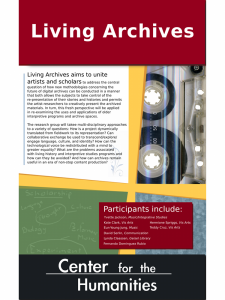 The self-contained HTML + media-store approach used here can represent many more tweets on one page, while achieving good page load performance.
The self-contained HTML + media-store approach used here can represent many more tweets on one page, while achieving good page load performance.
However, it retains direct links to each tweet and user online, so one can look up or follow users, see more recent activity around specific tweets, etc. This helps the archived version remain embedded in the ongoing network activity.
F) Publishing
The resulting Tweet presentation, with accompanying materials, was posted on my WordPress-based site with Disqus commenting plugin installed. Disqus allow users to comment using logins from Twitter, Facebook, Google, etc.; it also gathers and displays any mentions of the article URL it subsequently finds on Twitter. (this provides an additional, and automatic way for the stored archive to remain a living connection to ongoing activity).
The hosted Web version was also converted into a downloadable PDF file, for portability and (relative) permanence:
Play-is-Not-The-Opposite-of-Work_Stanford-mediaX-2013-Conference_Tim-McCormick.pdf (7MB).
Final Note: Beyond Twitter, Newswires of the Future
While the archiving exercise described above turned out somewhat laborious due to working out issues along the way, most of the steps are basically simple and automatable. (except for the curating of which tweet subset to present, and analyzing why tools got different results).
In fact, you could imagine these various gathering and publishing processes running automatically, for one or many channels/events. (attention Eventify: let’s talk). Extrapolating from this recklessly, as one does, you can picture a type of mass distributed pro-am (professional-amateur) reporting/archiving system. operating around a “message bus” or open “newswire” provided by Twitter or other social-media service.
This model/system, let’s call it Synapsys — because I did, and I’ve already registered the domain-name, as we do (kidding!.. Kleiner Perkins, let’s talk) — might provide alternate interfaces, assemblages, or publishing forms — e.g. an hourly or daily or weekly summary email / Web page, or an automatic printed summary, or highlights stories produced for local print/TV media — reaching out to many audiences beyond the comparatively early-adopter population that’s “on” Twitter.
Such innovations would be, however, constrained by Twitter’s increasing efforts to control all end-user reading interfaces — in contrast to the flourishing ecosytem of 3rd-party tools that developed in earlier years. While Twitter is the undisputed leader in global user base now, there are various organizations developing alternative platforms which are more open in various ways — e.g App.net, Diaspora, Tent.io, and Status.net. In this latest phase of evolving the new public nervous system, or “global brain”, or universal newswire, it’s still early days.






 MediaX at Stanford @MediaXStanford
MediaX at Stanford @MediaXStanford 
 Jay de Groot @jayster
Jay de Groot @jayster  jholston @jholston
jholston @jholston 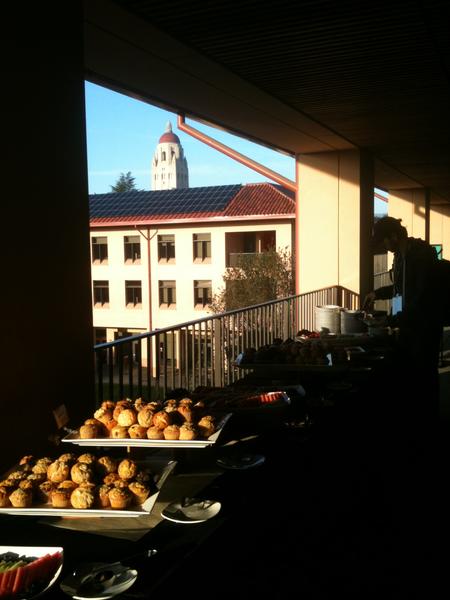
 Juliet Kunkel @juliet_kunkel
Juliet Kunkel @juliet_kunkel 




 John Alderman @mrhungry
John Alderman @mrhungry  Sean Mulholland @Illah
Sean Mulholland @Illah 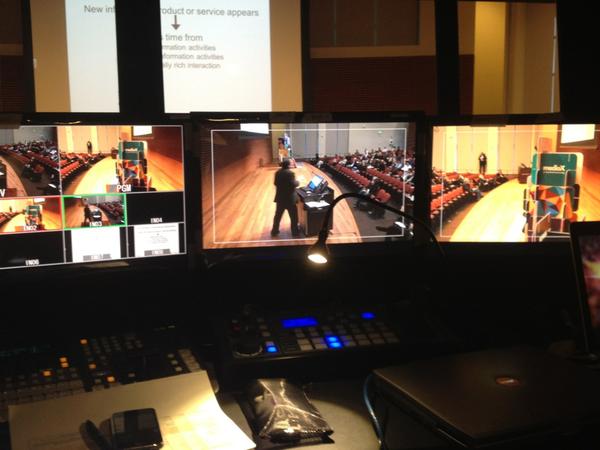
 Tony K. Lai @tonyklai
Tony K. Lai @tonyklai  trace cohen @traceable
trace cohen @traceable  California Picks @BestofCA
California Picks @BestofCA 


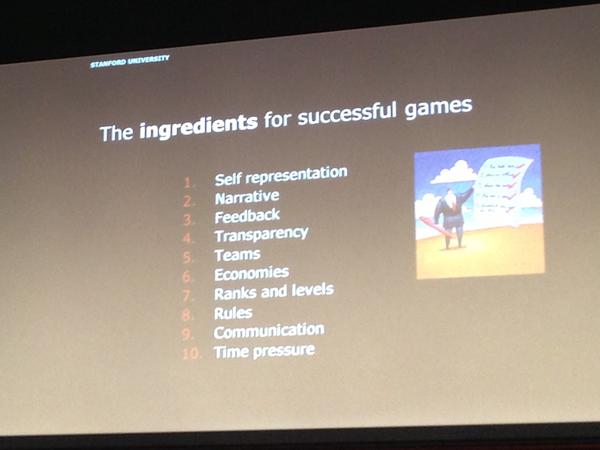
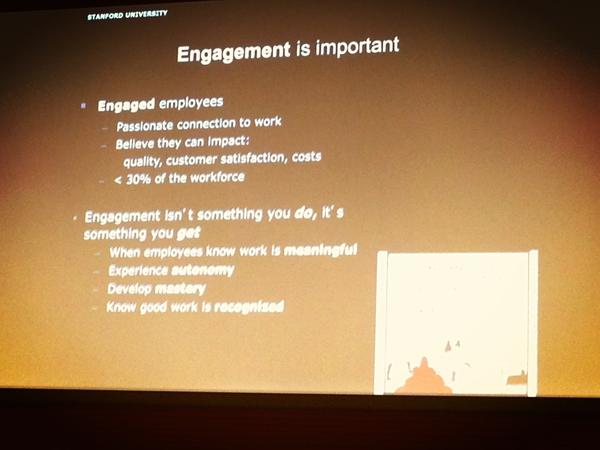
 Laurie Dean Baird @LawD
Laurie Dean Baird @LawD 








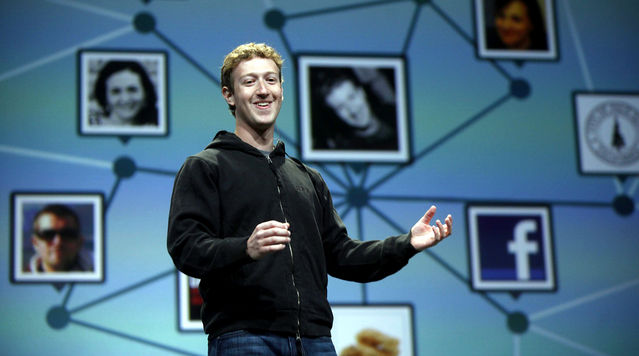
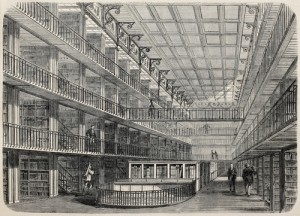

@clhendricksbc yes, think you may be thinking of this: http://t.co/kRk4Gp1HaJ as noted there, search is incomplete, Twitter says so openly.